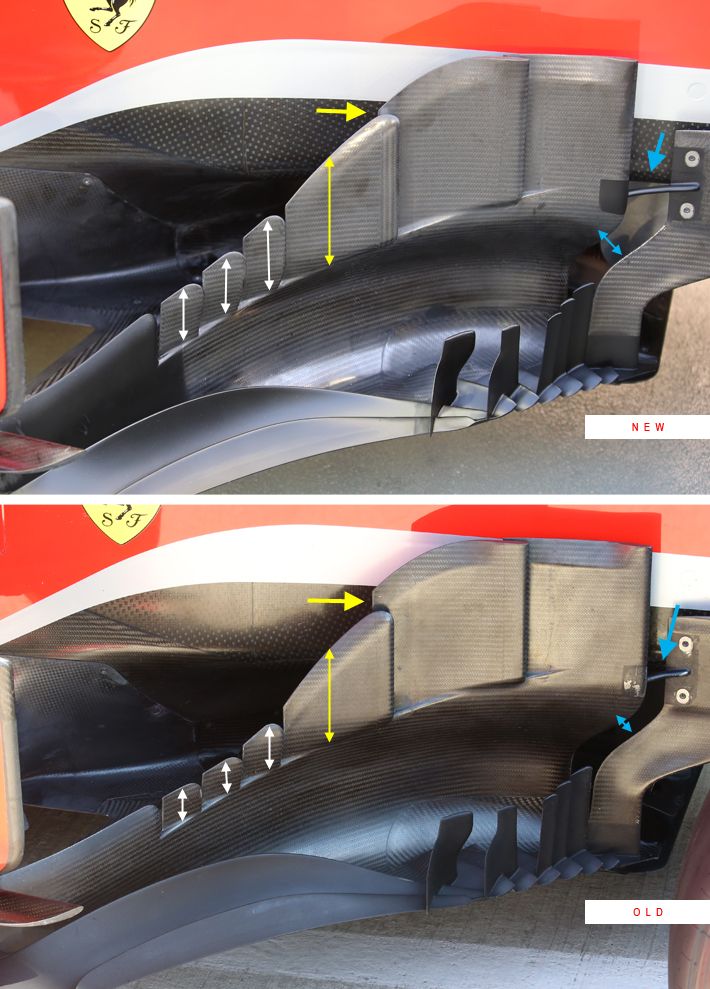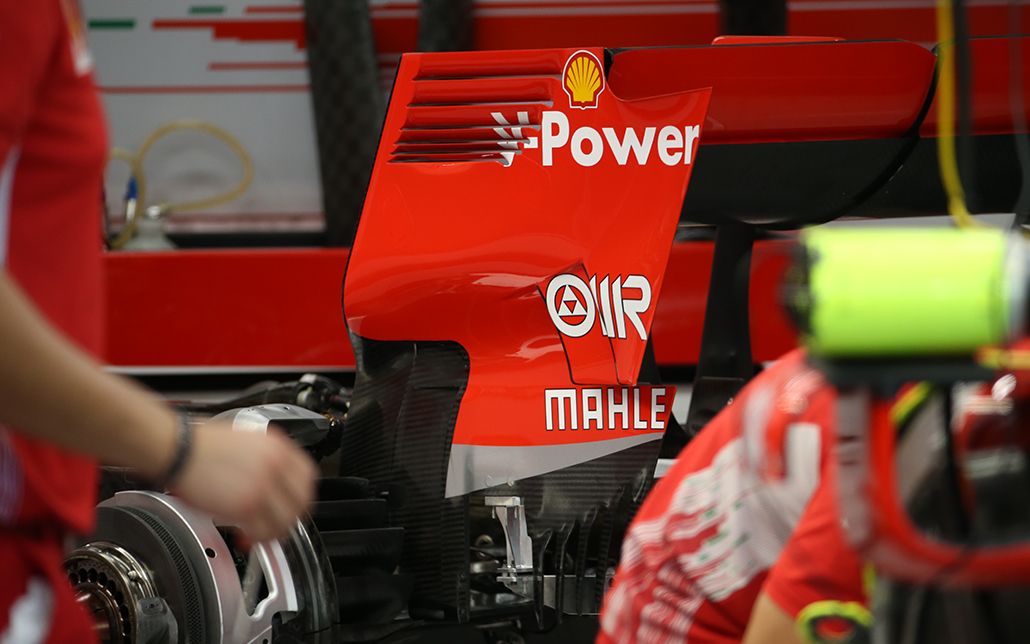THE DOUBLE ROLE OF THE BARGEBOARD
Among other developments seen in Singapore, Ferrari has slightly reworked the bargeboards of the SF71H.
While the first two elements keep the same height, the next ones have been raised (compare the white and yellow arrows). Note that the first element has been shortened, as evidenced by the length of the metal fastener (see the blue arrows).
Basically, the bargeboard fulfils two needs.
First, it serves as a flow conditioner, driving away the dirty wake of the front wheels. Otherwise the turbulent air would disrupt the flow onto the upper face of the diffuser and limit its efficiency.
Secondly, the component is also a vortex generator that produces two vortices: a lower vortex and an upper one
On each side of the car, the lower vortex flows towards the leading edge of the floor, which basically sits below the sidepod air intake. By accelerating and re-energising the airflow, the vortex increases suction in the profiled area, which results in more downforce. In both cases, it is actually several small vortices that come together to create a more powerful one.

MULTIPLE VORTICES
On each side of the car, the lower vortex flows towards the leading edge of the floor, which basically sits below the sidepod air intake. By accelerating and re-energising the airflow, the vortex increases suction in the profiled area, which results in more downforce.
The upper vortex is created at the top of the bargeboard and flows along its outline. This means it slopes downward and contributes to the downwash generated by other parts of the car (including the profiled wishbones, the fins on the edge of the cockpit, etc.). The downwash flattens the airflow rising in the wake of the front wing. As it goes down, the upper vortex moves away from the middle of the car and towards the flanks of the sidepods (where it interacts with the Y250 vortex) and leading edges of the floor.

 '
'




